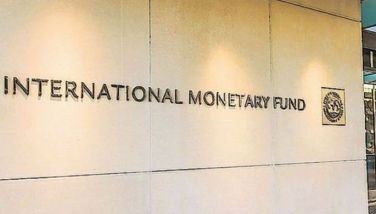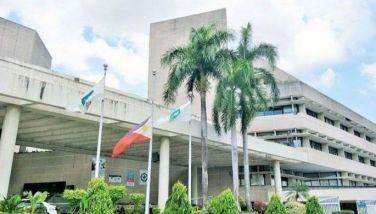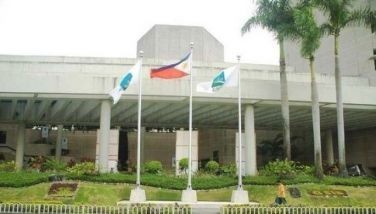Plantersbank takes over Active Bank
June 26, 2002 | 12:00am
Planters Development Bank (Plantersbank), the country’s largest private development bank, has successfully acquired Active Bank, following the approval of the transaction by the Bangko Sentral ng Pilipinas and the Philippine Deposit Insurance Corp. Active Bank, a thrift bank, has total resources of P1.2 billion and a network of 31 branches all over Metro Manila and Luzon. The takeover by Plantersbank takes effect on July 1, 2002.
Plantersbank chairman and CEO Jesus P. Tambunting said the acquisition will allow the bank to increase its branch network and depositor base. "With the ongoing moratorium on the issuance of branch licenses, we will definitely make full use of Active Bank’s 31 branches to expand our reach in areas where there is a strong presence of SMEs," Tambunting says.
"This opportunity could come at no better time, as we undertake the expansion of capabilities of our branches to market not only loans and deposits, but also cash management services, Internet-based solutions for SMEs and other value added services," he adds.
With basically the same target market and its successful track record in SME financing, Plantersbank is in the best position to take over Active Bank. Plantersbank’s focus on SME financing has established it as a model for other Asian financial institutions.
As a result of the acquisition, Plantersbank will now have 82 branches, consolidated assets of P23 billion and capital of P2.7 billion. This makes Plantersbank the 27th largest banking institution among 44 universal and commercial banks, 103 thrift banks, and 776 rural banks.
Plantersbank’s takeover of Active Bank caps a series of acquisitions made in the last three decades. Incorporated as the Bulacan Development Bank in 1961, shareholders assumed control and ownership in 1972. It merged with Bulacan Savings and Loan Association, and was renamed Planters Development Bank a year later. Plantersbank acquired Investors Savings and Loan Association based in Makati in 1977, Agro-Industrial Development Bank based in Pampanga in 1984, and Country Development Bank of Olongapo in 1986.
The bank’s focus and expertise in SMEs financing, and its steady growth, attracted prestigious foreign institutions. The Dutch government-controlled Netherlands Development Finance Co. (FMO) invested into Plantersbank in 1983 which marked the first time a foreign institution invested in a Philippine private development bank. Asian Development Bank (ADB) made its first equity investment in a privately-owned and managed corporation in the Philippines through Plantersbank in 1987, and the World Bank’s International Finance Corp. (IFC) invested over P1 billion in equity and financial assistance in 2000. Combined, these three financial institutions own over 40 percent of the bank.
In June 2000, Plantersbank, together with IFC, established a gateway for SMEs into the Internet through PDB SME Solutions, Inc. which won the 2001 Asian Banking Award for e-commerce service.
Plantersbank, together with IFC, FMO, Doen Foundation and International Micro Investitionen, established Micro Enterprise Bank (MEB) last year. Based in Davao, it grants loans for the working and entrepreneurial poor.
Plantersbank chairman and CEO Jesus P. Tambunting said the acquisition will allow the bank to increase its branch network and depositor base. "With the ongoing moratorium on the issuance of branch licenses, we will definitely make full use of Active Bank’s 31 branches to expand our reach in areas where there is a strong presence of SMEs," Tambunting says.
"This opportunity could come at no better time, as we undertake the expansion of capabilities of our branches to market not only loans and deposits, but also cash management services, Internet-based solutions for SMEs and other value added services," he adds.
With basically the same target market and its successful track record in SME financing, Plantersbank is in the best position to take over Active Bank. Plantersbank’s focus on SME financing has established it as a model for other Asian financial institutions.
As a result of the acquisition, Plantersbank will now have 82 branches, consolidated assets of P23 billion and capital of P2.7 billion. This makes Plantersbank the 27th largest banking institution among 44 universal and commercial banks, 103 thrift banks, and 776 rural banks.
Plantersbank’s takeover of Active Bank caps a series of acquisitions made in the last three decades. Incorporated as the Bulacan Development Bank in 1961, shareholders assumed control and ownership in 1972. It merged with Bulacan Savings and Loan Association, and was renamed Planters Development Bank a year later. Plantersbank acquired Investors Savings and Loan Association based in Makati in 1977, Agro-Industrial Development Bank based in Pampanga in 1984, and Country Development Bank of Olongapo in 1986.
The bank’s focus and expertise in SMEs financing, and its steady growth, attracted prestigious foreign institutions. The Dutch government-controlled Netherlands Development Finance Co. (FMO) invested into Plantersbank in 1983 which marked the first time a foreign institution invested in a Philippine private development bank. Asian Development Bank (ADB) made its first equity investment in a privately-owned and managed corporation in the Philippines through Plantersbank in 1987, and the World Bank’s International Finance Corp. (IFC) invested over P1 billion in equity and financial assistance in 2000. Combined, these three financial institutions own over 40 percent of the bank.
In June 2000, Plantersbank, together with IFC, established a gateway for SMEs into the Internet through PDB SME Solutions, Inc. which won the 2001 Asian Banking Award for e-commerce service.
Plantersbank, together with IFC, FMO, Doen Foundation and International Micro Investitionen, established Micro Enterprise Bank (MEB) last year. Based in Davao, it grants loans for the working and entrepreneurial poor.
BrandSpace Articles
<
>
- Latest
- Trending
Trending
Latest





























